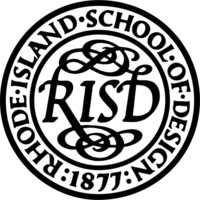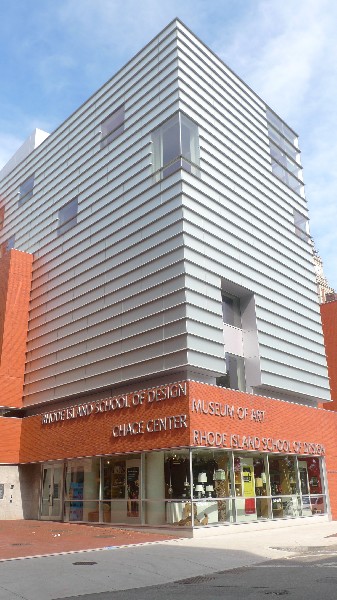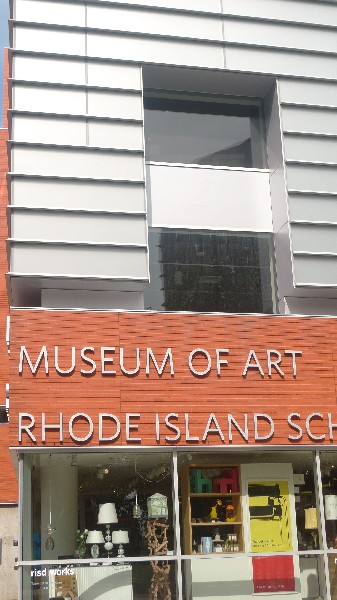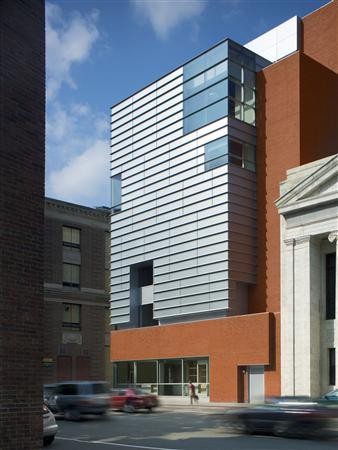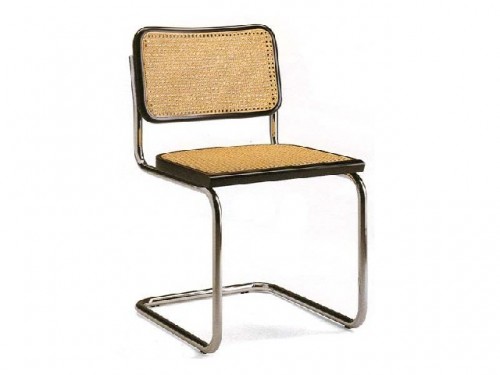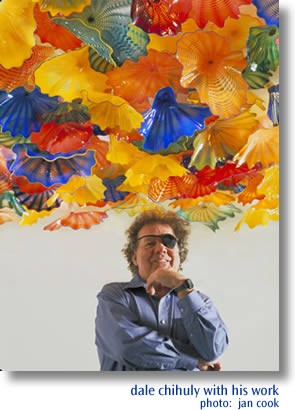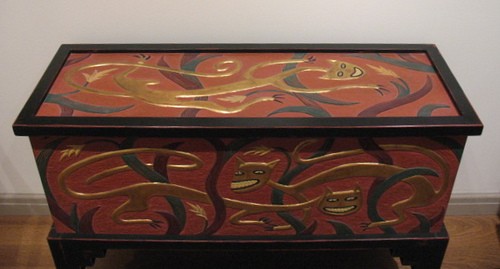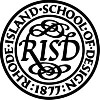The New Chace Center and Thoughtful Design At The Rhode Island School of Design
Committment to Design Underscored
By: Mark Favermann - Sep 30, 2009
A few years ago, before she went to jail on trumped up charges, I attended an extravagant presentation by Martha Stewart at the Rhode Island School of Design. The school was honoring her with their major recognition award. Stewart's presentation was spectacular. It was designed and refined as elegantly as a presentation about cookies, canapes, seasonal decorations, table settings and home decor could be. At the time, Stewart had over 30 employees who had attended RISD. This is not surprising as RISD has been producing high level designers for over 130 years. Why wouldn't crafty Martha hire the best?The Rhode Island School of Design (RISD) can be considered the Harvard of art and design colleges. Located in Providence, RI, it was founded in 1877 and contiguous with the Brown University campus. The two schools share academic and social resources and offer joint courses. RISD consistently ranks as the number one fine arts college in the United States.
RISD has about 2200 students in 16 majors including about 400 graduate students. The RISD Museum includes a collection of nearly 80,000 pieces of art and design. The institution was begun after the Centennial Exposition in 1876 with funds left over from the Rhode Island exhibit. It was incorporated by the Rhode Island legislature in 1877. Its founder was Helen Adelia Rowe Metcalf who directed the school until her death in 1895. Her daughter, Eliza Greene Metcalf Radeke succeeded until death in 1931.
The school's objectives were simple: (1) instruction of artisans in drawing, painting, modeling and designing so they may successfully apply the principles of art to the requirements of trade and manufacturing; (2) the systematic training of students in the practice of Art in order that they become teachers of art or artists themselves; and (3) the general advancement of art by public art education, art school studies and lectures. This is as relevant today as it was nearly a century and a half ago.
RISD has historically combined art, architecture and design in its curriculum. Its museum has always exhibited serious design and fine art. In fact, the Paula and Leonard Granoff Galleries in the newly renovated 1926 Radeke Building display masterworks of painting, sculpture, furniture, ceramics, drawings, photography, costume, textiles and industrial design from 1900 to 2000. These objects are drawn from the Museum's permanent collection. The range is dynamic and broad from Henri Matisse to Frank Lloyd Wright, or Andy Warhol to Ettore Sottsass. The objects convey the last century's revolutionary changes in art, design and technology.
The Museum's 20th Century design collection includes furniture by Alvar Aalto, Josef Hoffmann and Charles and Ray Eames, metalwork by Erik Magnussen, ceramics by Auguste Delaherche and Peter Voulkos, glass by Frederick Carter and Dale Chihuly and wallpaper by Akexander Calder and Roy Lichtenstein. The RISD Museum is a leading collector of American studio furniture. Many of the artists have ties to the school. Among those included in the collection are Judy McKie, Jere Osgood, and Alphonse Mattia.
Special design exhibits are part of RISD's tradition. Last Spring the Museum exhibited Marcel Breuer: Design and Architecture. This was the first major exhibit to treat all facets of Breuer's work with balance. It showed the highly innovative furniture that he produced as both a student and teacher at the Bauhaus, his modestly scaled but elegant houses and the major primarily institutional buildings that he designed in major cities around the world. Breuer designed the iconic Wassily and Cesca chairs as well as the Whitney Museum. A few of his design failures were shown as well.
Developed by the Vitra Museum of Design in Germany, the exhibit traced several themes that connected various apparently diverse elements of Breuer's prolific and influential work. RISD was the only Northeastern stop for the exhibit. Twelve scale models of some of his more notable architectural projects were presented. Breuer was a giant of design. This was a very special exhibit.
Last October, RISD opened the Chace Center designed by Pritzker-Prize winning architect Spanish Jose Rafael Moneo to fit on a site bordered on three sides by historic structures. The Chace Center is the only example of a super star architect's craft in Providence. Specific details of the building include both clear and acid-etched glass complemented by red brick. The horizontal courses of glass are accentuated by aluminum fins at the building's corners. This gives the glass an upward motion. The placement of the windows on the North face of the building is composed in a slightly Mondrian-like effect that distinguishes each floor through the shifting pattern. The clear glass is backed by a mirrored surface and acid etched on the outer face to give it a silvery look. The clear glass windows built into coves bisect floors thus creating unusual views both into the galleries and out to surrounding Providence.
The UV-shielding gallery windows allow the use of natural light while still protecting artwork. A horizontal band of monolithic toned bricks (due to matching mortar) both anchor the building and appear to float between the plate glass of the storefront below, and above, the mecurial glass facade. The brick references traditional Providence cityscape materials, yet is distinguished by a more intense contemporary color.
Constructed on a former parking, the 43,000 square foot building is destined to be the literal heart of the RISD campus. The five story edifice allows for an expansion of the RISD Museum, a large retail store and cafe, academic classroom and studio spaces. Architect Moneo is known for integrating provocative contemporary architecture into historic contexts.
Named for a long term generous family, the Chace Center project not only added a new building but included renovations to RISD's Memorial Hall, a college building. The Risd Museum's 1926 Eliza Radeke Building was restored as well. The Museum's permanent collection galleries have been reinstalled and are being reimagined. This process will be completed by 2010. The total cost of the project was $43 million part of the $85 million Future by Design Campaign that was completed in 2006. This is impressive in a time of scaled back resources and a deep recession. However, this project speaks to RISD's traditional and contemporary commitment to great architecture and design.
Though there are many distinguished alumni from RISD, due to their professional accomplishments and/or wealth, few unless they have inherited wealth have the megabucks that other school's alums can donate to their alma maters. Some notable RISD alumni include renowned glass sculptor Dale Chihuly, Talking Heads leader David Byrne (he dropped out), word artist Jenny Holzer, architect illustrator David Macauley, fashion designer Liz Collins, children's book author illustrator Chris van Allsburg, furniture master Judy McKie, creator of the show Family Guy Seth MacFarlane, and actor/writer and artist Martin Mull. Millionaire architect Graham Gund studied there as well.
However, the few wealthy folks associated with the school do not come close to the alumni financial stars of other private schools. In a time of severe recession, how does a RISD cope? The word on the street is that Brown University and RISD may be merging. They are both great institutions, close neighbors, and already sharing resources. This makes sense financially, but will it work artistically? The 21st Century is a strange time.

